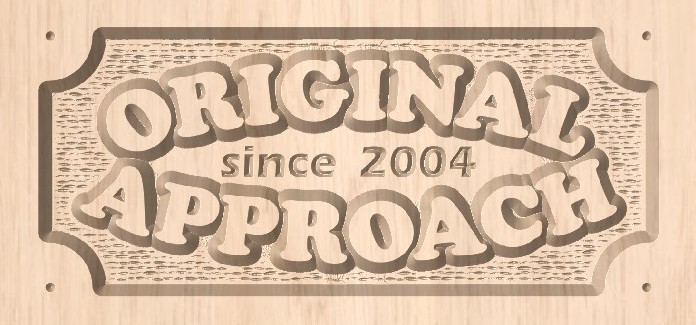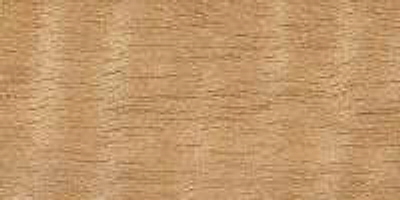|
BOTANICAL NAME: Aningeria spp. including A. altissima, A. dombeyi, A. robusta,
and A. superba of the family Sapotaceae
COMMON NAMES: anigre, aniegre, aningeria, aningeria blanc, aningre, aningueri
blanc, aninguerie, asamfona, grogoli, kali (Angolla), kararo, landojan, landosan
(Nigeria), m'boul, mukalati, mukali, mukanga, mukangu, muna (Kenya), mutoke
(Uganda), n'kali, nkalate, nkalati, osan, tanganika, tanganyika nuss, tutu,
TYPE:
COLOR: The heartwood is generally described as creamy yellow to pale pink to
reddish-brown, darkening slightly upon exposure, and not sharply demarcated from
the sapwood which is also pale pink to reddish-brown. In my own experience, I
have found the lumber to be creamy off-white, sometimes with some pinkish tinge,
and the veneer to be varying shades of yellow. Blue stain is common.
GRAIN: straight to wavy. Fiddleback anegre is common, especially in veneer, as
are various forms of mottling ranging from sharp razor mottle to vague block
mottle. Bee's wing figure is sometimes advertised, but I find this generally to
be just a tight mottle, not really true bee's wing. Bird's eye figure is also
found occasionally.
TEXTURE: There is no consensus, with reports ranging from fine to medium to
coarse. My experience is medium, verging on fine, not verging on coarse, and
with a medium luster, although sometimes the veneer has a high luster.
PROPERTIES / WORKABILITY: It works easily with both hand and machine tools,
although some species are silicious and have a blunting effect on cutters,
especially in planing and sometimes in boring (it may chip out). It has good
nailing, screwing, and gluing characteristics. Turns and carves reasonably well.
DURABILITY: The wood is susceptible to various insects, termites, and fungus
attack, and liable to blue stain. Both heartwood and sapwood are perishible, but
moderately permeable and respond well to preservative treatment. Mechanical
durability is not good enough to make this an acceptable flooring material.
FINISH: takes stains and finishes quite well and can be polished to a moderate
natural shine
STABILITY: movement in service is low
BENDING: medium bending characteristics
ODOR: similar to that of cedar and without any distinctive taste.
SOURCES: Central and tropical Africa, including Angola, Benin, Cameroon, Central
African Republic, Congo, Ethiopia, Gabon, Ghana, Guinea, Guinea bissau, Ivory
coast, Kenya, Liberia, Nigeria, Sierra leone, Sudan, Togo, Uganda, Zaire, and
Zambia
USES: I have seen fiddleback anegre architectural panals in numerous high end
hotels and some office buildings. It has a plethora of other uses, including:
bedroom suites, bent parts, boat building, boxes and crates, building
construction, building materials, cabin construction, cabinetmaking, canoes,
chairs, chests, concealed parts (furniture), construction, core stock,
decorative plywood, decorative veneer, desks, dining-room furniture, domestic
flooring, dowell pins, dowells, drawer sides, drum sticks, excelsior, factory
construction, factory flooring, figured veneer, fine furniture, floor lamps,
flooring, furniture, furniture components, furniture squares or stock, general
carpentry, hatracks, heavy construction, joinery, kitchen cabinets, lifeboats,
light construction, living-room suites, matches, millwork, mine timbers, musical
instruments, office furniture, organ pipes, parquet flooring, piano keys,
pianos, plain veneer, plywood, posts, pulp and paper products, radio - stereo -
tv cabinets, railroad ties, rustic furniture, shipbuilding, sounding boards,
stools, structural plywood, sub-flooring, tables, turnery, utility furniture,
utility plywood, vehicle parts, veneer, violin, violin bows, wardrobes and
xylophones.
TREE: trunk diameters of 3 to 4 feet, height to 180 feet, clear cylindrical bole
about 85 feet, above symmetrical buttresses
WEIGHT: 31 lto 36 pounds per cubic foot
DRYING: reported to dry well and rapidly, with little degrade but some tendancy
to acquite blue stain in the inital stages of drying. Rapid extraction,
conversion and drying is recommended
AVAILABILITY: readily available, especially in veneer
COST: moderate in lumber, veneer is inexpensive
|




